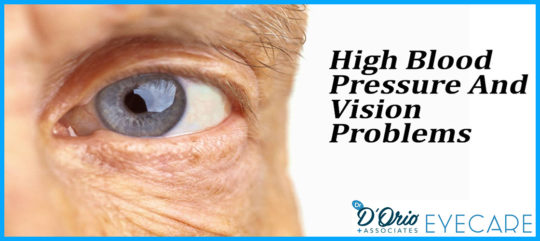
30 Aug HIGH BLOOD PRESSURE LEADS TO EYE DISEASE
Have you noticed that whenever you go into the doctor’s office for any reason, they always check your blood pressure? They put the sphygmomanometer or blood pressure metre around your arm and inflate it with air. This is such a standard procedure but a very critical one in the maintenance of our health. Although the human body is extremely complex, with many different ‘moving parts’, all the unique and different parts are all interconnected. So, a pulled muscle in your hamstring can affect your neck’s mobility as with a condition like high blood pressure can affect the way your eyes process images. Everything is connected, and nothing can be left to chance, especially when it concerns our health!
Did you know that blood pressure is the force of pressure against the blood vessel walls, and not the speed at which blood flows through your arteries and veins? Did you also know that high blood pressure leads to Hypertensive retinopathy, an eye disease that has no symptoms but is easily detected during a routine eye exam? It’s a scary thought when something as serious as high blood pressure which causes life threatening conditions like aneurysms (bulging of your artery), heart attacks, strokes and kidney failure, have no symptoms.
The causes of high blood pressure are still unknown, but known factors do contribute to its development:
– Smoking
– Being overweight
– Consuming too much salt
– Being physically inactive
– Consumption of too much alcohol
– Stress
– Older age
– Genetics
– Adrenal and thyroid disorders
– Sleep apnea
It seems like anyone can have high blood pressure. You don’t need to be overweight, nor do you have to consume unhealthy amounts of salt or even be a smoker. You can be fit and have problems sleeping. You can be at an age where the chances of having high blood pressure are more common. Your high blood pressure could be hereditary. Or you could just be under a lot of stress.
Did you also know that your optometrists can check for high blood pressure? They’ll use a special instrument called an ophthalmoscope to check the back of your eyeball for narrowed blood vessels, spotting of the retina, any type of discharge, swelling of the retina and optic nerve and any kind of bleeding.
We are all at risk, regardless of our health, which is why we should come in and have ourselves checked out. See your health care provider or your eye doctor before its too late. Do it today!
[/bt_text][/bt_column][/bt_row][/bt_section]


